Drugs continue to plague the community but fear not – the North Central Narcotic Task Force is making a name for itself in Churchill County and other surrounding Northern Nevada counties.
The Task Force, a grant-funded joint law-enforcement operation, includes officers on loan from the Fallon Police Department, deputies from the Churchill County Sheriff’s Office, and investigators from the Department of Public Safety. The primary focus of the Task Force is narcotics enforcement and protecting local citizens against drug-related crime. And they are doing just that.
In a recent bust, the Task Force executed a targeted operation and arrested several known suspects; Tanina Barley, Zachary Rau, Corey Etchinek, Paul Rice, and Katherine McLellan. The arrests resulted in multiple charges for each suspect, including possession of a Scheduled I or II controlled substance (under 14 grams). Rice was arrested for possessing, selling, and transporting 14-28 grams with an enhancement for proximity to a school. Other charges included resisting arrest, possession of drug paraphernalia, probation violations, and additional minor charges.
According to Fallon’s Task Force supervisor (TFS), the support received from the community and local law enforcement agencies has been vitally important to their success. With a team of very active, highly motivated officers, they keep the local drug users and distributors on their toes. “It comes down to supply and demand,” said the TFS. An influx of illicit narcotics is making its way into the area, and with it comes greater demand and availability. Most drugs are trafficked into Fallon from more metropolitan areas, most commonly Reno and Carson. However, illegal drugs are also brought in from southern Nevada, but currently on a smaller scale.
Meth is a problem for Fallon – and has been for over 30 years. Most criminal activity, either using or selling drugs or drug-related crimes like theft and property crime, is connected to methamphetamine use. Meth also continues to be one of the most challenging drugs to kick. Many users are ordered to complete in-patient treatment for their addiction or check themselves in, only to find themselves in the depths of addiction months or even years later. The TFS said that they often arrest users but are targeting dealers. However, in the Fallon drug culture, most dealers are also users. Which is common in smaller towns and rural areas, said the TFS. Even in metropolitan areas, it is hard to find upper-level dealers that are strictly business and do not use their products.
Fentanyl, while relatively new to Fallon, is beginning to rear its ugly head. The white powder drug is more potent than most opioids and up to 100 times stronger than morphine. It is impossible to tell if Fentanyl is in something - or how much, as it has no taste or smell. According to the TFS, it is usually found in capsule form or fake pills and mixed with other drugs. It is cut into meth, cocaine, and heroin and is swallowed, snorted, or injected without the user’s knowledge. Generally, it is manufactured in an illegal drug lab or made from patches that have been sold or stolen. The Center for Addiction and Mental Health reports, “The difference between a dose that will get you high and a dose that can kill you is very small.
Further, you can overdose even if you use a prescription patch with an identified dose. Everyone handles Fentanyl differently. One person’s dose can kill another person.” In essence, playing with Fentanyl is playing Russian Roulette.
Fortunately, the Task Force sees relatively small amounts of heroin. Heroin addicts tend to gravitate toward more metropolitan areas, explained the TFS. While prescription drugs are on the street in Fallon, they are usually sold for cash by individuals with valid prescriptions who either do not need the extra medication or need the money the pills can bring. These typically include narcotic pain medications and anxiety benzodiazepines like Xanax and Valium.
The culture is changing, however. With legislative changes and new sentencing guidelines, judges have less discretion when convicting users and dealers. The recent shift in trafficking laws has made it far more difficult to convict an induvial moving large amounts of illicit drugs. Previously, 28 grams constituted a trafficking charge. In 2019, the Nevada State Legislature increased the amount to 100 grams.
Further, the legislature has made most lower-level drug offenses, including sales, probational. While the Western Nevada Regional Drug Court program has yielded outstanding results, probation and Drug Court may not be appropriate in every case. Yet, judges must follow state statutes. Most arrests last year by the Task Force were for possession and sales, with some transporting (28-99 grams). While it is unclear how aware users and dealers are about the changes in the law, penalties are less severe, and both Justice and District Court are seeing many of the same offenders regularly.
In addition to legislative changes, buying and selling drugs is easier than ever with the Venmo, Zelle, Cash App, and other electronic money exchange applications. Narcotics can be bought and sold on the dark web and even paid for in cryptocurrency. Money can change hands from anywhere with little effort. However, that information is traceable – albeit not easily. Like every other law enforcement agency, the Task Force utilizes technology as a tool to get the information required to target and arrest dealers in the area. Even more impressive, the investigators dig into the details themselves, with very little technical assistance from outside agencies. The deeper the investigation goes, the more information they can utilize. And very soon, they will have a spectrometer also.
Another grant was approved to keep Task Force operations active and on the cutting edge, and with comes access to spectrometry. A spectrometer allows for much safer drug testing and handling, which is particularly important with dangerous drugs like Fentanyl that are difficult to analyze in the field. Through means of mass spectrometry, infrared spectrometry, or ion mobility, a laser can identify the chemical content of a given substance; powers, pills, etc. Most drugs are identifiable by a spectrometer, which can access a searchable database. To be utilized by all local law enforcement agencies when needed, the spectrometer help minimize some of the risks and hazards associated with drug arrests. It also decreases exposure to the public.
Another problem noted by Task Force officers is that most of the people they arrest are unemployed. Undoubtedly, this is a multifaceted issue, as users and dealers are getting by somehow. In all likelihood, by selling drugs. Even in small quantities. Several arrestees are on public assistance and cannot afford an attorney, so they are appointed public defenders. Furthermore, theft and property crimes often accompany drug use. What is the result? A financial strain that is costing the community resources. There is also a social cost, which is unquantifiable in terms of dollars and cents.
As seen in both Justice and District Court cases, drug use and sales continue to escalate. The problem of illicit narcotics is no longer a nuisance or something to be ignored by the community at large. Just because it lives in the shadows of this small rural Nevada town does not shield residents from the devastating destruction. The fallout runs deep and wide. However, the Task Force provides a bit of counterbalance and is working hard to target and arrest those that profit from the addiction and enslavement it causes.
Fallon officials, including New River Township Justice Court Judge Benjamin Trotter, who also served as Churchill County Sheriff for eight years, support the Task Force to keep drugs off the streets. “I have noted that the members of the current narcotics Task Force are as active as I have ever seen in my 26 years of interacting with the Task Force,” said Judge Trotter last year. “One of the best changes I am noting is that they are focusing their work in our community. Our neighborhoods and streets will benefit from their efforts.”


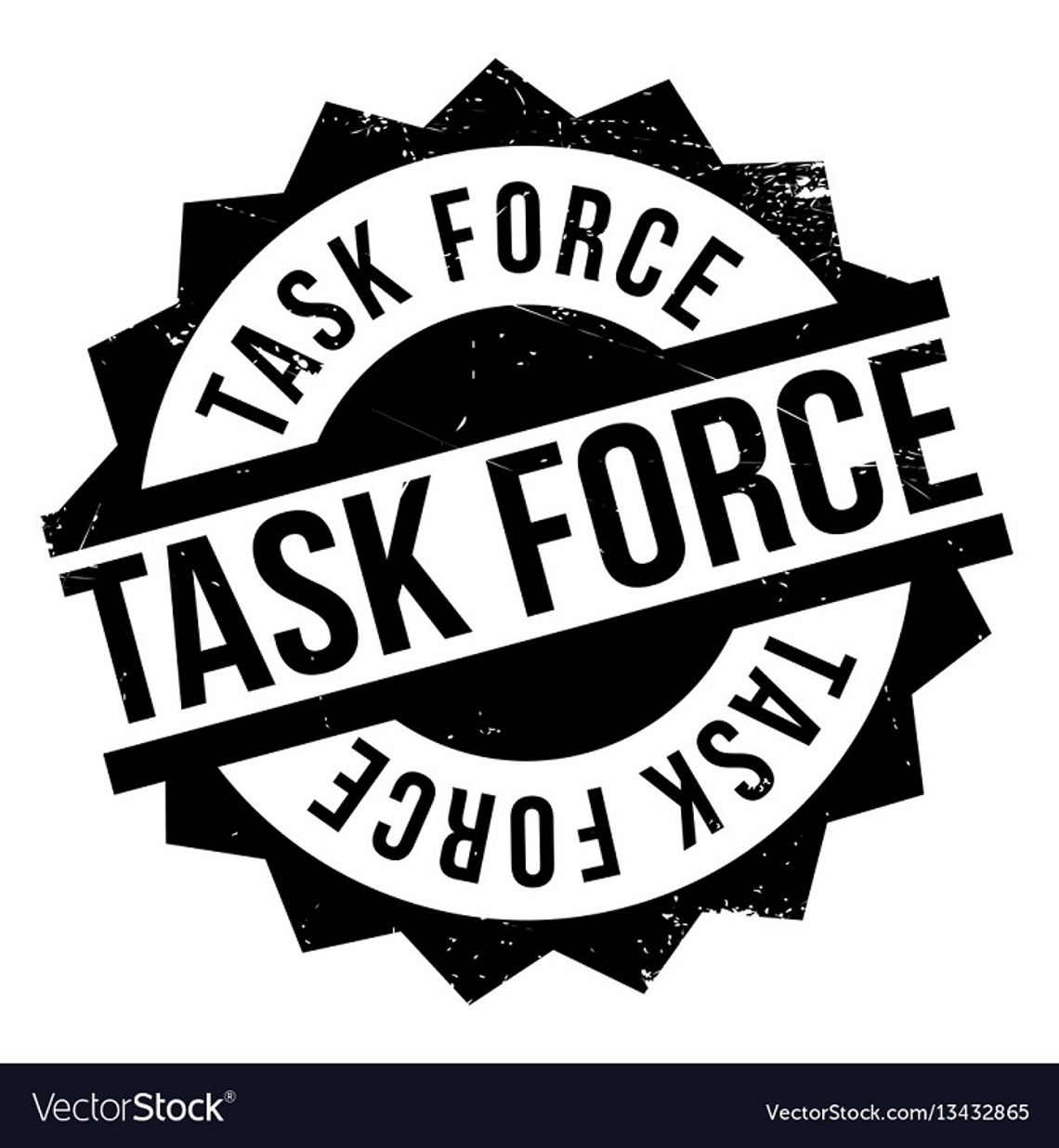
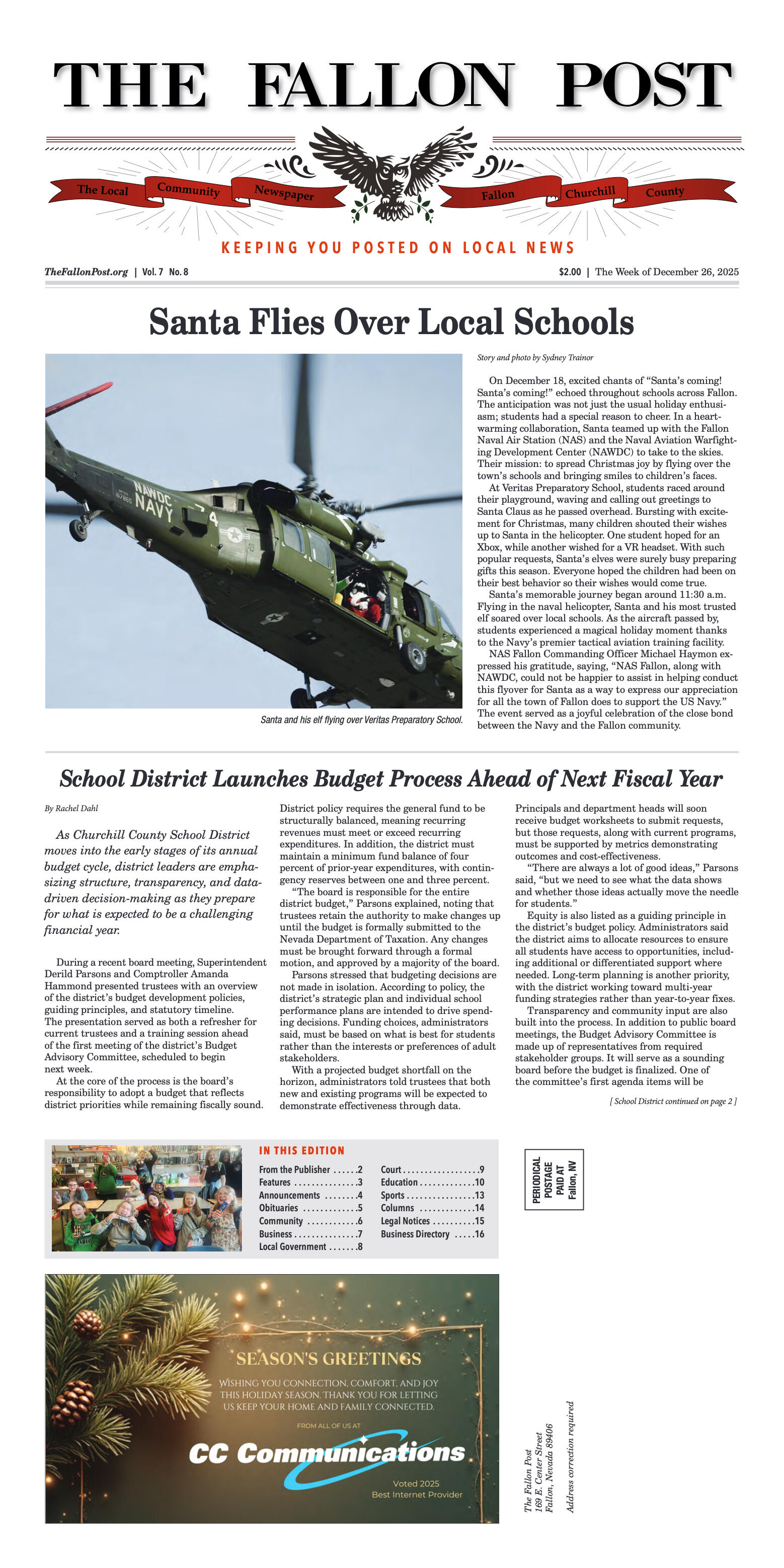
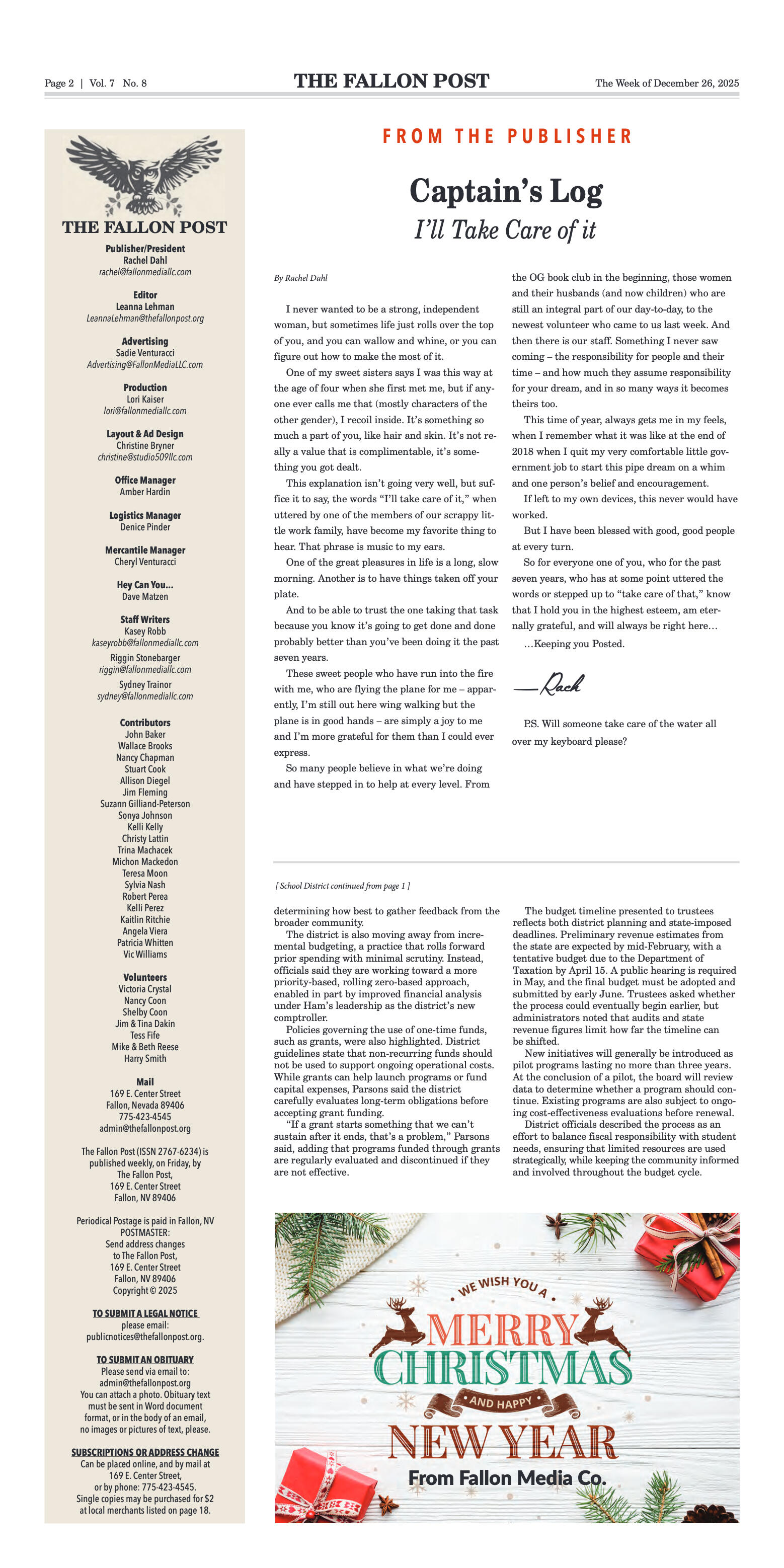
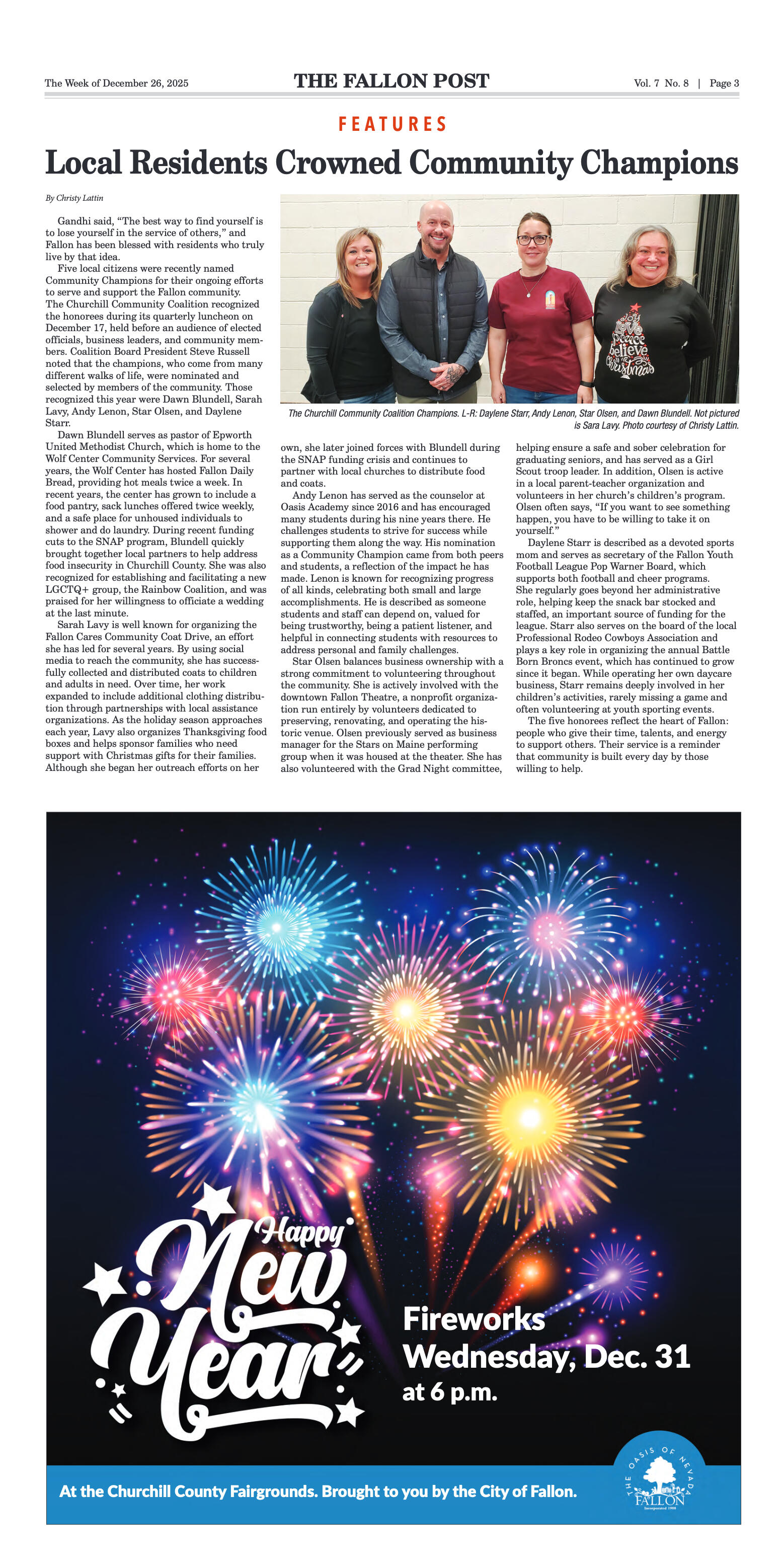
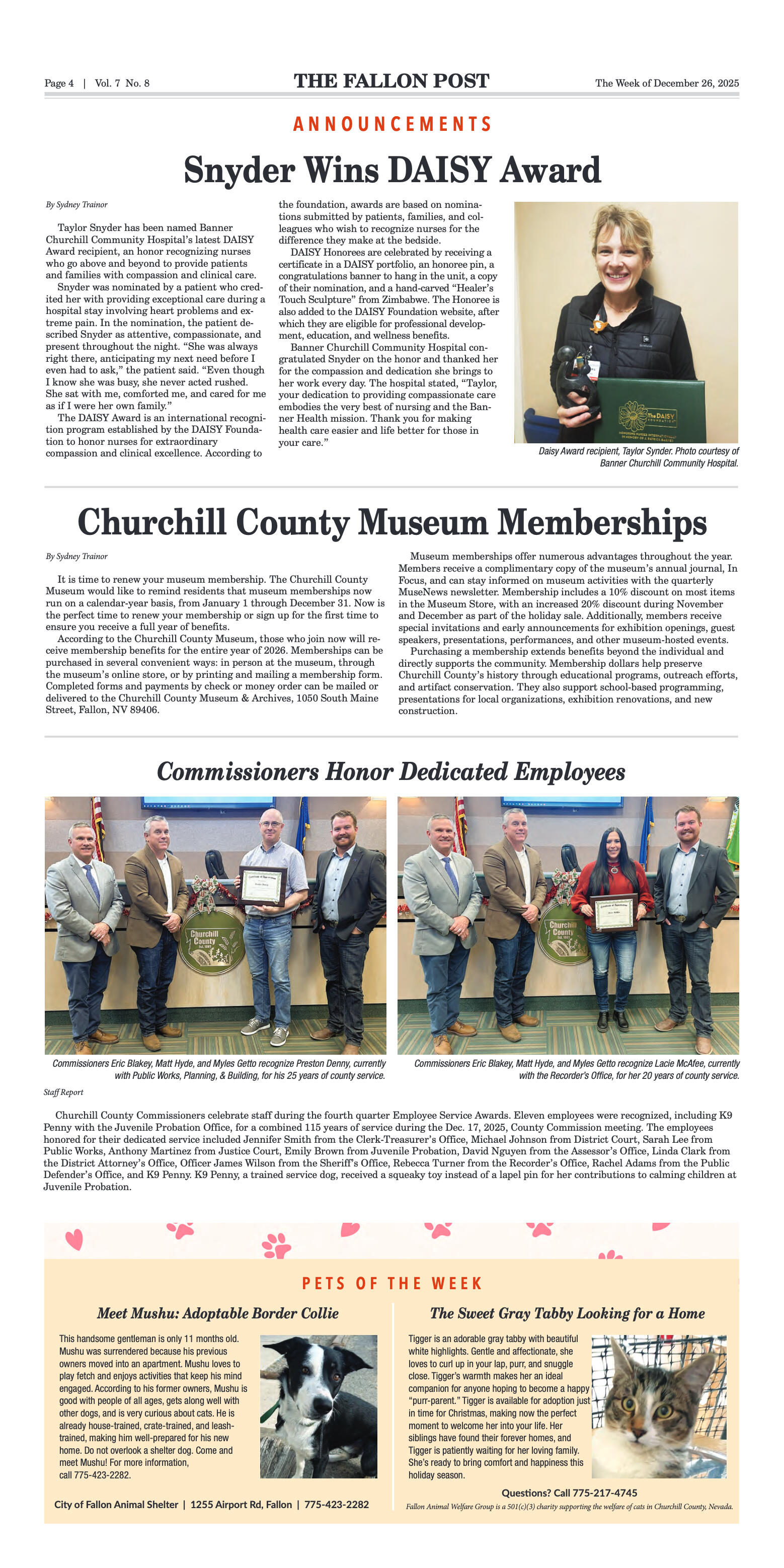

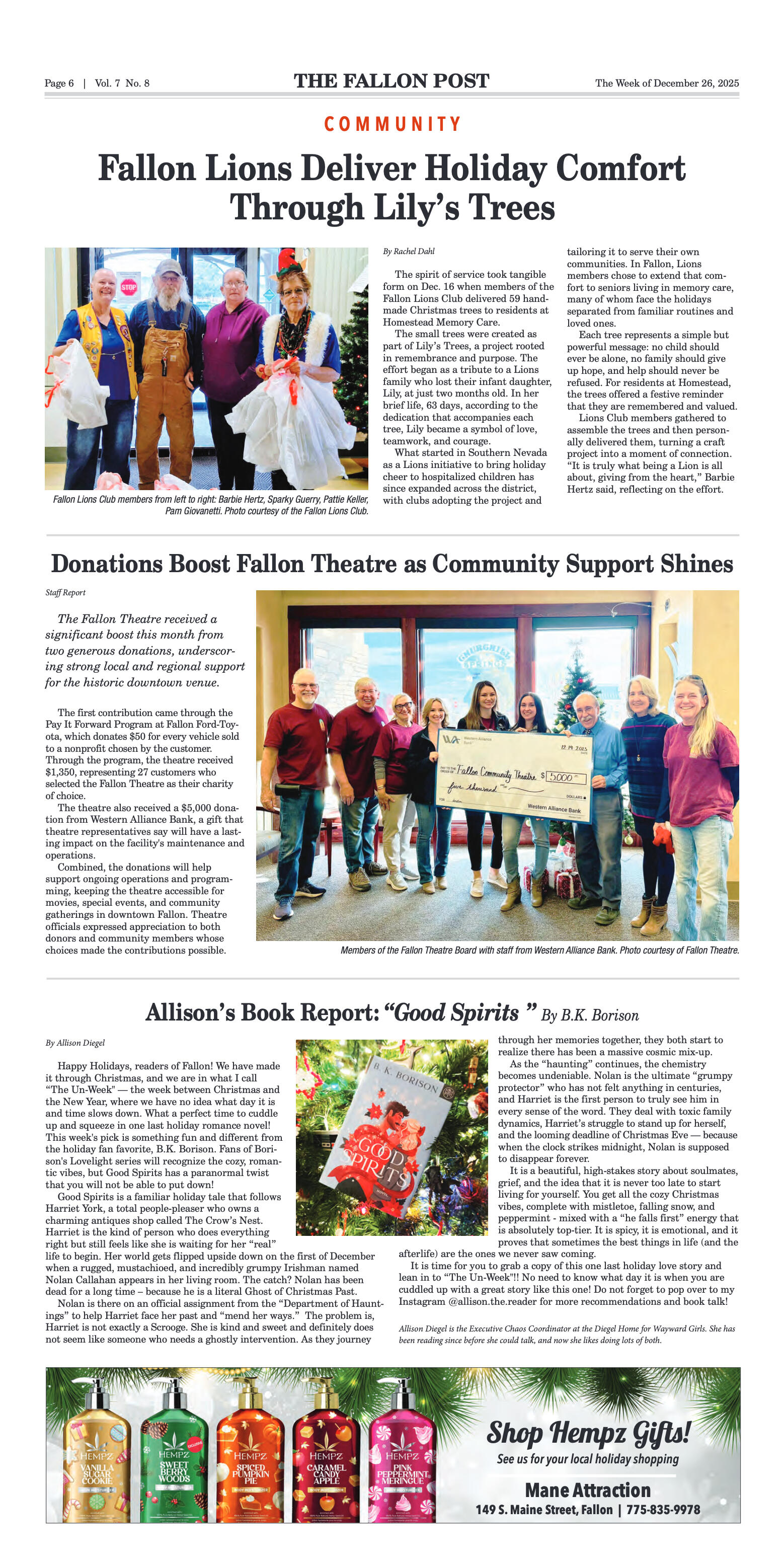
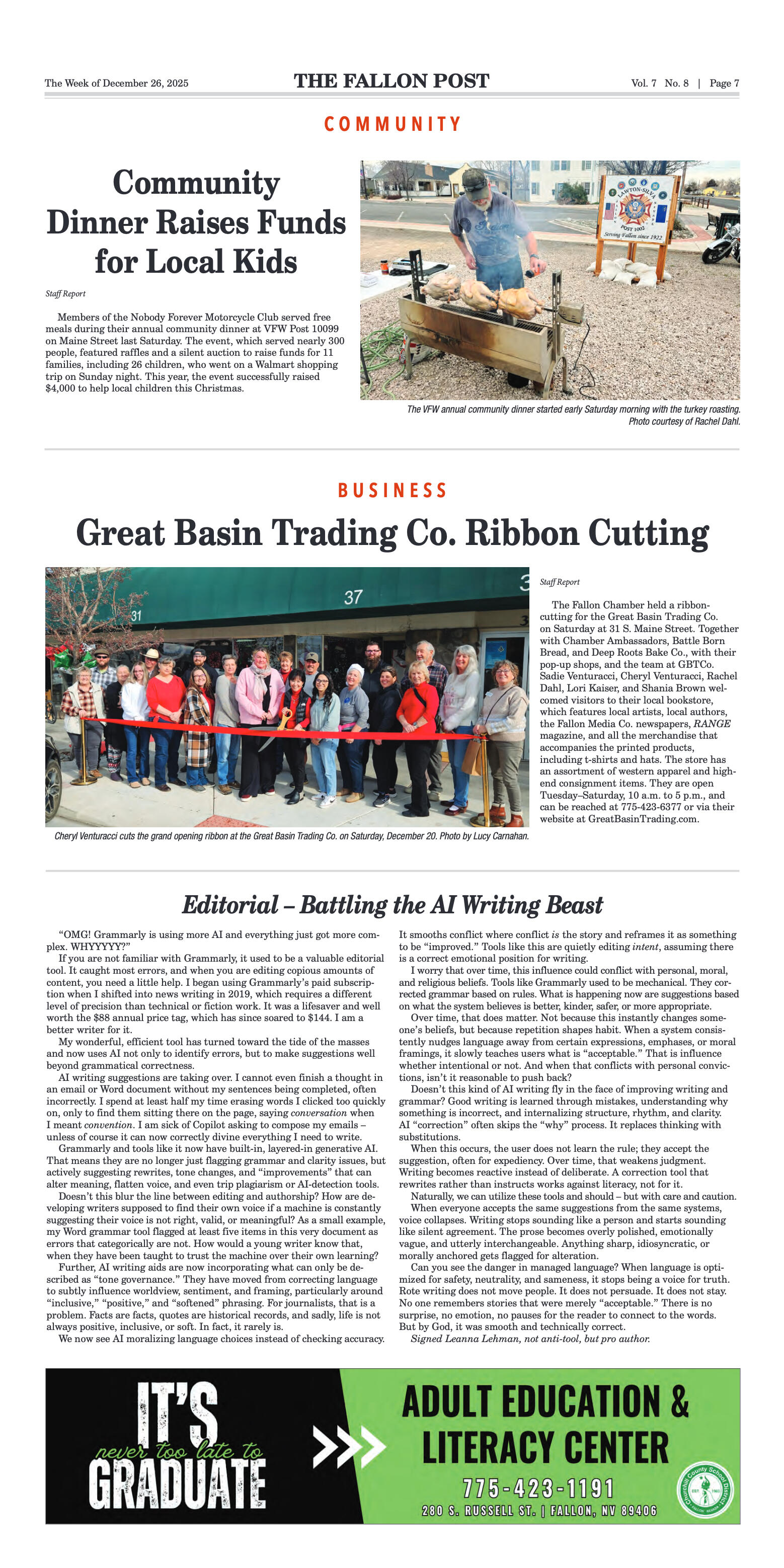
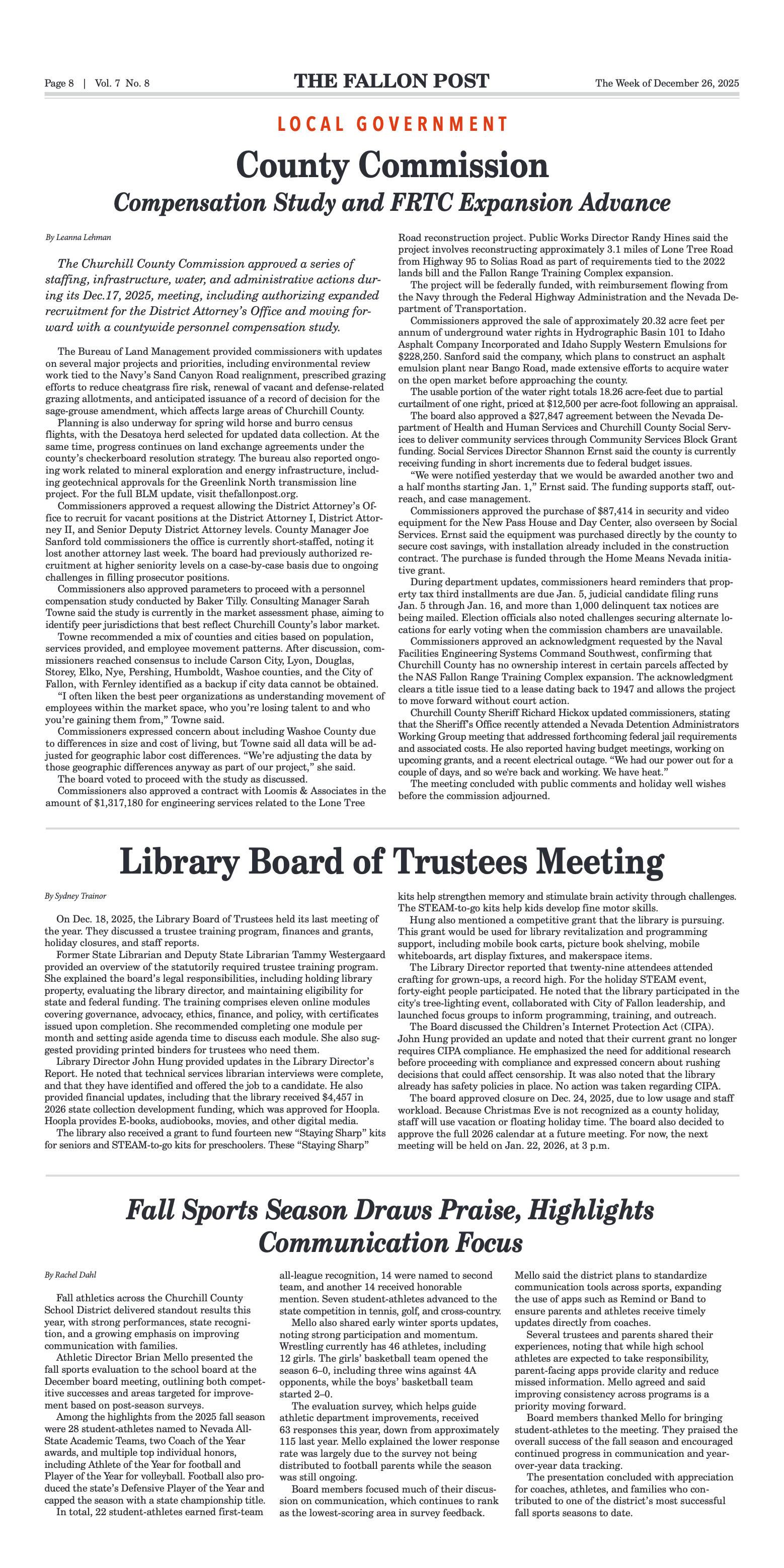
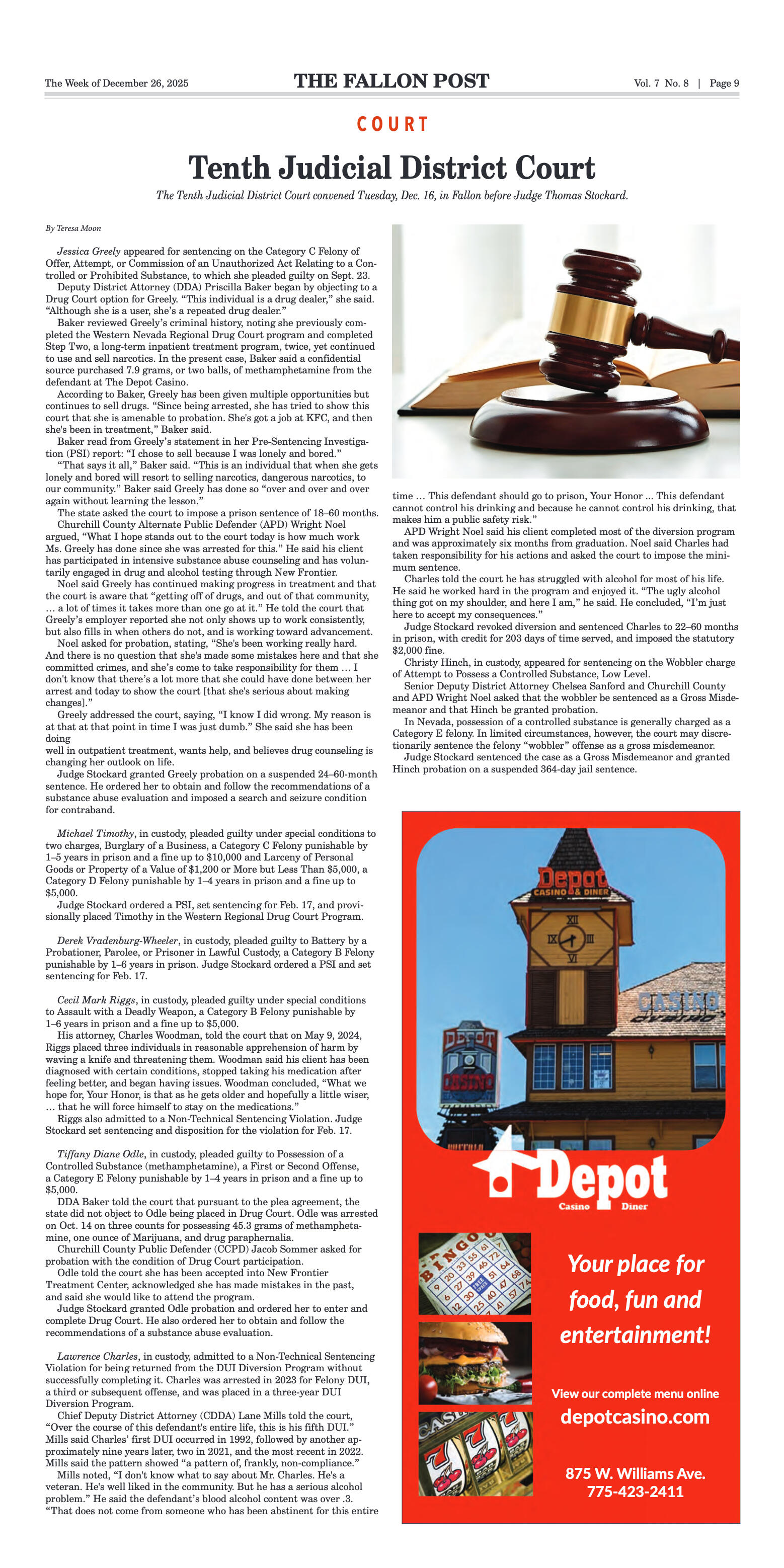

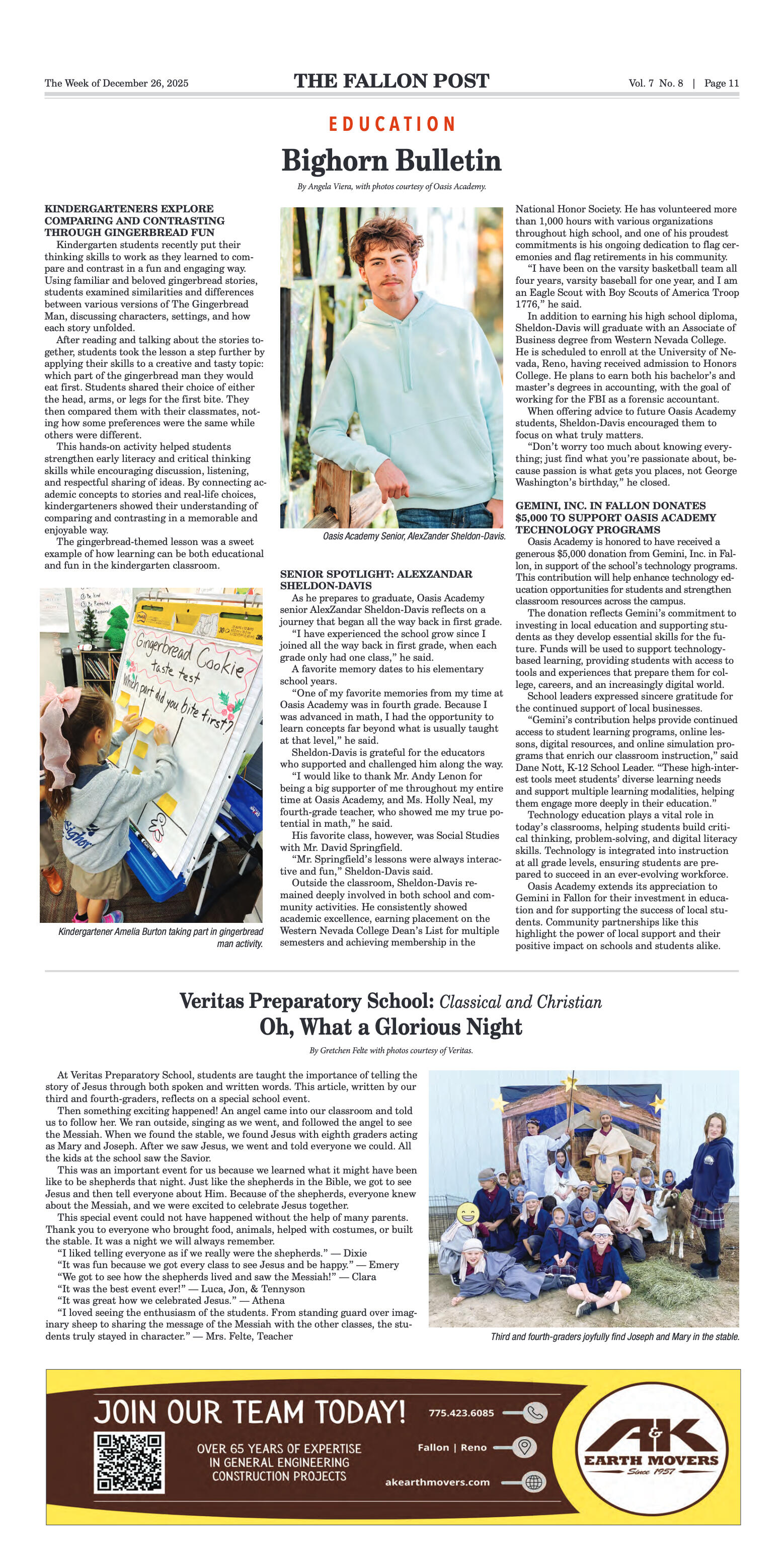
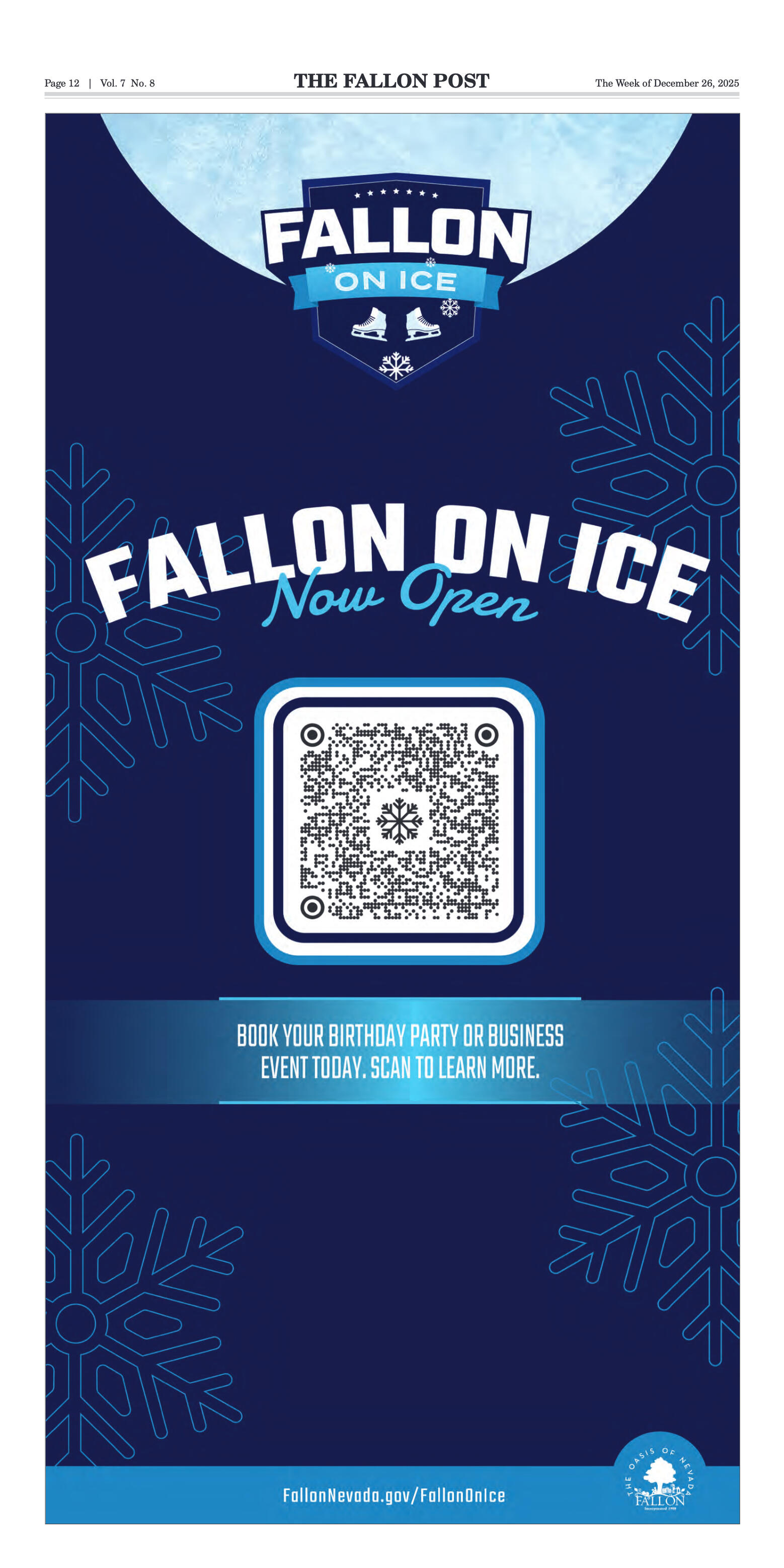


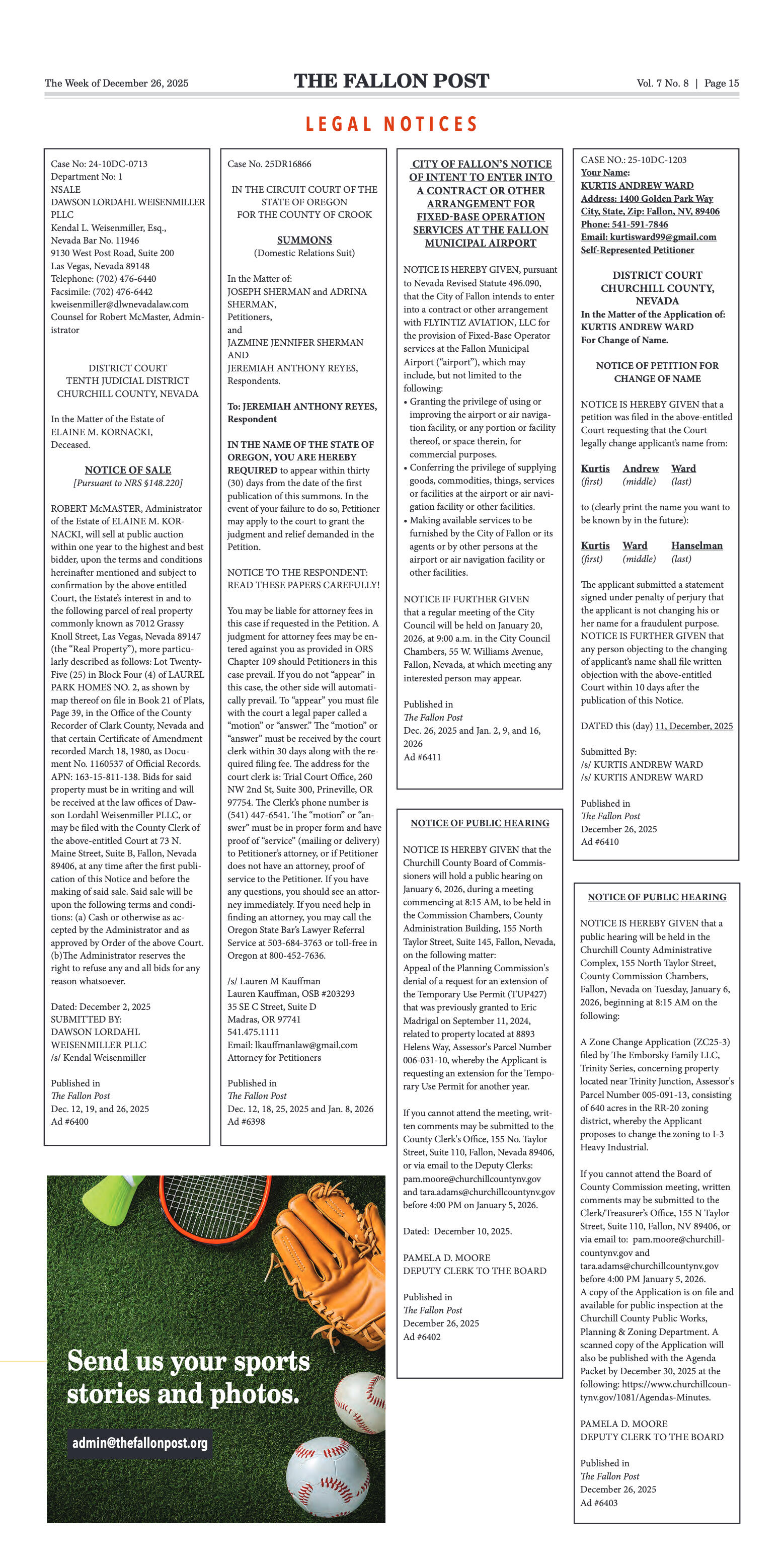





















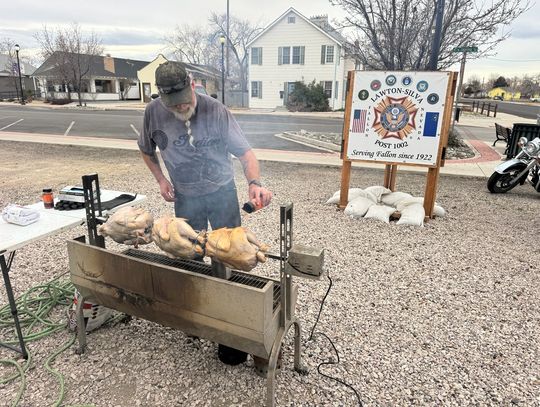





Comment
Comments